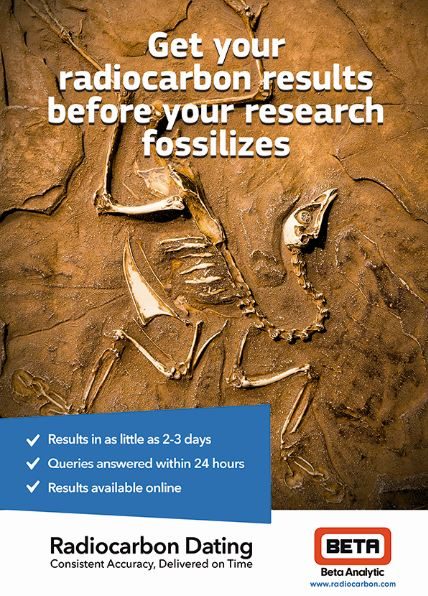As part of its commitment to provide high-quality results to its clients, ISO/IEC 17025:2017-accredited Beta Analytic does not accept pharmaceutical samples with “tracer Carbon-14” or any other material containing artificial Carbon-14 to eliminate the risk of cross-contamination. Moreover, the lab does not engage in “satellite dating” – the practice of preparing individual sample graphite in a remote chemistry lab and then subcontracting an AMS facility for the result.
“Satellite analysis induces indeterminate errors, breaks the chain of custody on quality control, and allows for ambiguity in accountability to the results. All work is done in our laboratory, on our own AMS machines, and our own chemistry lines, ensuring complete chain of custody on quality control and allowing us to be solely accountable to our clients. We can address any questions our clients have using complete and immediately available records. Inquiries are always welcome,” Beta Analytic president Darden Hood says.
Pharmaceutical companies evaluate drug metabolism by using a radiolabeled version of the drug under investigation. AMS biomedical laboratories use Carbon-14 as a tracer because it can easily substitute Carbon-12 atoms in the drug molecule and it is relatively safe to handle. Tracer Carbon-14 is a well-known transmittable contaminant to radiocarbon samples, both within the AMS equipment and within the chemistry lab.
“Since the artificial Carbon-14 used in these studies is phenomenally high (enormous) relative to natural levels, once used in an AMS laboratory it becomes ubiquitous. Cross-contamination within the AMS and the chemistry lines cannot be avoided. Although the levels of contamination are acceptable in a biomedical AMS facility, it is not acceptable in a radiocarbon dating facility,” Mr. Hood states.
Beta Analytic does not subcontract work to other labs. Its policy is to have direct contact with clients, maintain complete chain of custody in quality control, use its own AMS machines, and have a complete working knowledge of each analysis to best answer questions once results are available.
The ISO/IEC 17025:2017-accredited lab is able to offer such rapid service because all analyses are done in-house. The lab has a dedicated full-time staff of technicians and scientists working overtime, if necessary, to meet its promised delivery times.
For radiocarbon dating cost and other inquiries, please email the lab using this form or call +(1) 305-667-5167.
References:
Memory effects in an AMS system: Catastrophe and Recovery. J. S. Vogel, J.R. Southon, D.E. Nelson. Radiocarbon, Vol 32, No. 1, 1990, p. 81-83 doi:10.2458/azu_js_rc.32.1252 (Open Access)
Recovery from tracer contamination in AMS sample preparation. A. J. T. Jull, D. J. Donahue, L. J. Toolin. Radiocarbon, Vol. 32, No.1, 1990, p. 84-85 doi:10.2458/azu_js_rc.32.1253 (Open Access)
Prevention and removal of elevated radiocarbon contamination in the LLNL/CAMS natural radiocarbon sample preparation laboratory. Zermeño, et. al. Nuclear Instruments and Methods in Physics Research Section B: Beam Interactions with Materials and Atoms Vol. 223-224, 2004, p. 293-297
doi: 10.1016/j.nimb.2004.04.058
High level 14C contamination and recovery at XI’AN AMS center. Zhou, et. al. Radiocarbon, Vol 54, No. 2, 2012, p. 187-193
doi:10.2458/azu_js_rc.54.16045

This entry was posted on Friday, June 27th, 2014 and is filed under Beta Analytic Updates .